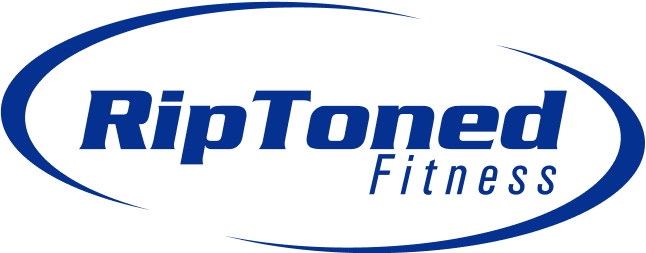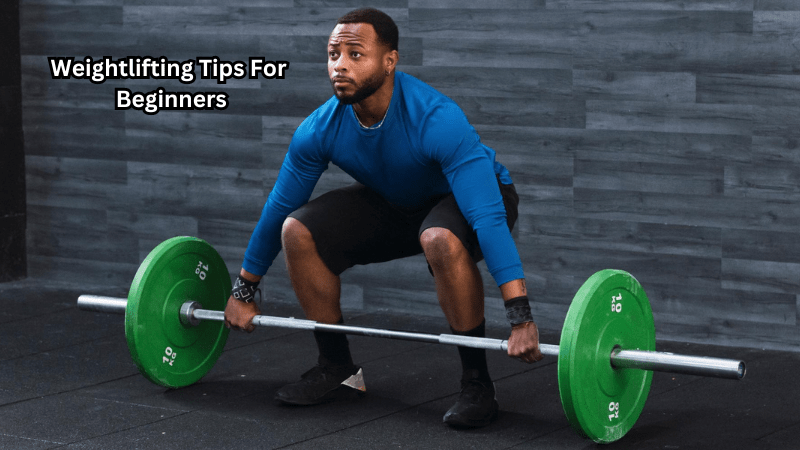If you're new to weightlifting, it can be an intimidating and overwhelming experience. With so many different exercises, equipment, and techniques to learn, it's easy to feel lost and unsure where to start. However, weightlifting is a fantastic form of exercise that can improve your overall health and fitness.
In this guide, we'll provide some valuable tips for beginners looking to get into weightlifting. We'll cover everything from proper warm-up techniques and essential exercises to nutrition and recovery strategies. By following these tips, you'll be well on your way to building strength, improving your physique, and achieving your fitness goals.
What is Weightlifting?
Weightlifting, also known as resistance training or strength training, is a form of exercise that involves using various types of weights to challenge and strengthen your muscles. This can include free weights like dumbbells and barbells, weight machines, and bodyweight exercises.
The primary goal of weightlifting is to build muscle mass and increase strength. However, it has numerous other benefits, including improving bone density, boosting metabolism, and enhancing overall physical performance. Weightlifting can be beneficial for people of all ages and fitness levels.
Plus, weightlifting is a versatile form of exercise that allows for endless variations and customization. Whether your goal is to build muscle, lose weight, or improve your athletic performance, weightlifting can be tailored to meet your specific needs and goals.
Essential Tips for Beginners
There are a few key tips that every beginner should keep in mind when starting weightlifting:
Start with the Basics
When you're new to weightlifting, it's crucial to start with the foundational exercises. Focus initially on compound movements such as squats, deadlifts, bench presses, and rows. These exercises engage multiple muscle groups simultaneously and help build a strong foundation for more advanced techniques.
Avoid jumping into heavy weights immediately; instead, begin with lighter weights to master the correct form and technique. This approach minimizes the risk of injury and sets you up for long-term success.
Don't hesitate to seek advice from a fitness professional or trainer who can guide you through the fundamental movements and ensure you're performing them correctly. Building a solid foundation with basic exercises will pave the way for a safe and effective weightlifting journey.
Focus on Proper Form
Proper form is crucial for both safety and effectiveness in weightlifting. Without proper form, you risk injury and may not be targeting the desired muscle groups effectively. As a beginner, it's essential to focus on mastering proper technique before increasing weights or intensity.
To ensure proper form, pay attention to your posture, engage your core muscles, and move slowly and intentionally through each exercise. It can also be helpful to record yourself performing exercises so you can review and make any necessary adjustments.
If you feel unsure or uncomfortable about your form, don't be afraid to ask for guidance from a trainer or experienced weightlifter. They can provide valuable feedback and help you correct any mistakes.
Gradually Increase Weight and Intensity
As you become more comfortable with the foundational exercises and your form improves, it's important to gradually increase the weight and intensity of your lifts. This gradual progression is key to building strength safely and effectively.
A general guideline for increasing weights is to aim for a 5-10% increase per week. However, listen to your body and adjust accordingly. If you're struggling with a particular lift or feeling fatigued, don't be afraid to decrease the weight or take an extra rest day. It's always better to prioritize proper form and avoid injury.
Additionally, don't rush into advanced exercises or techniques before mastering the basics. Building a solid foundation with compound movements will help prevent injury and ensure you're ready for more challenging exercises.
Don't Neglect Warm-Up and Cool-Down
Warming up and cooling down are essential parts of any weightlifting routine. A proper warm-up prepares your body for exercise by increasing blood flow, loosening muscles, and improving range of motion. This can help prevent injuries and improve performance during your workout.
A good warm-up should include dynamic stretches, light cardio, and some reps of the exercises you'll be performing. Similarly, a cool-down should include static stretching and foam rolling to help reduce soreness and aid muscle recovery.
Additionally, incorporating active recovery days into your routine can help prevent injury and improve overall performance. These are lighter workout days focused on stretching and mobility exercises to promote muscle recovery and prevent overtraining.
Listen to Your Body
Above all, it's essential to listen to your body when starting weightlifting. As a beginner, it's normal to experience some soreness and discomfort as you adjust to the new movements and intensity. However, if you're experiencing sharp or persistent pain, it's crucial to stop and assess the cause.
Don't push through pain or try to lift heavier weights than you're ready for. This can lead to injuries and setbacks in your progress. Instead, focus on gradual progression, proper form, and taking rest days when needed.
Additionally, prioritize proper nutrition and recovery to support your weightlifting journey. Get enough protein to aid in muscle repair and rest between workouts to allow your body time to recover and grow stronger.
So, as a beginner, remember to start with the basics, focus on proper form, gradually increase weight and intensity, warm up and cool down properly, and always listen to your body. These essential tips will set you up for success in your weightlifting journey. Happy lifting! End of section.
Does Age Matter?
One common question among beginners is whether age plays a role in weightlifting. The simple answer is no; it's never too late to start weightlifting and reap its benefits.
Weightlifting can be especially beneficial for older adults. As we age, our muscle mass naturally decreases, which can lead to decreased strength and mobility. Weightlifting helps counteract this by building lean muscle mass and improving overall strength and function.
However, it's crucial to approach weightlifting with caution as we get older. It may take longer for muscles and joints to recover, so it's important to listen to your body and adjust accordingly. Starting with lighter weights and focusing on proper form is key for older adults beginning a weightlifting routine.
Additionally, it's important to consult a doctor before starting any new exercise regimen, especially if you have pre-existing health conditions.
On the other hand, younger individuals may also benefit from weightlifting. It can improve bone density and prevent osteoporosis later in life.
Regardless of age, incorporating weightlifting into your fitness routine at any stage can bring significant physical and mental benefits. So don't let age hold you back from reaping the rewards of weightlifting!
Can Women Benefit from Weightlifting?
Another common misconception is that weightlifting is only for men. In reality, women can benefit tremendously from weightlifting and should not be afraid to incorporate it into their fitness routine.
Weightlifting can help improve bone density, increase muscle mass, and boost metabolism in women. Furthermore, it can also improve overall strength and function, making everyday tasks easier.
There is no need to worry about becoming "bulky" or developing a masculine physique as a woman. This often stems from the myth that lifting heavy weights will cause women to look more muscular. In reality, building significant muscle mass requires a combination of heavy weightlifting, specific nutrition plans, and potentially even supplements. Women who lift weights typically develop lean and toned muscles rather than bulky ones.
It's also important to note that women may have different training needs or goals compared to men. For example, they may need to focus more on exercises that target the hips and thighs since these areas are prone to injury in females.
Mistakes to Avoid
As with any new endeavor, it's common to make mistakes when starting weightlifting. Some of the most common mistakes include:
- Starting with too much weight - As mentioned earlier, it's important to start with lighter weights and focus on proper form before increasing intensity. Plus, using too much weight can lead to injuries. And remember, lifting weights that are too heavy for you doesn't make you stronger; it can hinder progress. Plus, it's not worth sacrificing form for heavier weights.
- Skipping warm-up and cool-down - We've already discussed the importance of warming up and cooling down, but it's worth mentioning again. These steps are crucial for preventing injuries and aiding in muscle recovery.
- Neglecting rest days - Rest days are just as important as workout days. Your muscles need time to recover and grow stronger, so don't skip out on rest days or do high-intensity workouts every day.
- Not focusing on proper form is essential for injury prevention and effective strength building. Don't sacrifice form for heavier weights, and consider working with a trainer to ensure you're using the proper form.
By avoiding these common mistakes, you can set yourself up for success in your weightlifting journey. Remember to start slow, listen to your body, and prioritize recovery for optimal results.
FAQs
What are the best weight training exercises for beginners?
The best weight training exercises for beginners focus on major muscle groups and include movements like squats, deadlifts, bench presses, and rows. These exercises form the foundation of any effective weight training routine and help build strength and muscular endurance. Incorporating these into your strength training workout can provide balanced muscle development and enhance overall fitness.
How should beginners determine the right amount of weight to lift?
Beginners should start with a manageable amount of weight that allows them to perform exercises with proper form and control. It's advisable to begin with lighter weights and gradually increase the weight as strength and confidence improve. Consulting a certified personal trainer can help ensure the weight training program is tailored to individual needs and goals, reducing the risk of injury.
Why is it important to focus on major muscle groups in a strength training program?
Focusing on major muscle groups in a strength training program is crucial for building overall strength and muscular endurance. Working on major muscle groups ensures balanced development and helps support joint stability and movement efficiency. A comprehensive strength training workout targeting these groups can enhance athletic performance and daily functional activities.
Should beginners consider working with a personal trainer for their weight training routine?
Yes, beginners should consider working with a personal trainer to develop a safe and effective weight training routine. A certified personal trainer can provide personalized guidance, correct techniques, and create a strength training program that aligns with specific goals. This professional support can help beginners build confidence, prevent injuries, and achieve optimal results from their weight training exercises.
Conclusion
Weightlifting is a fantastic exercise that can bring numerous physical and mental benefits. However, it's important to approach it with caution, especially as a beginner.
Start with the basics, focus on proper form, listen to your body, and gradually increase intensity. Keep in mind that weightlifting is not just for men; women and individuals of all ages can benefit from incorporating it into their fitness routine.
Be sure to avoid common mistakes such as starting with too much weight or neglecting rest days. And always prioritize proper nutrition and recovery for optimal results.
With dedication, perseverance, and smart training, weightlifting can help you reach your fitness goals and improve your overall well-being. So don't be afraid to pick up those weights and start your weightlifting journey today!


